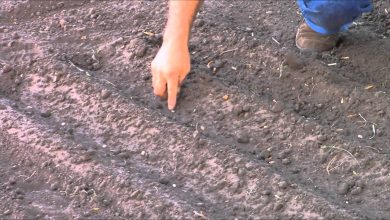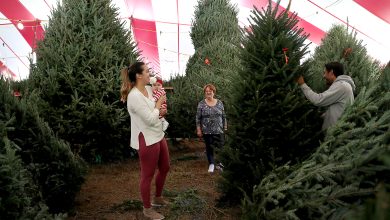Beijing: Growing an Urban Garden in Winter
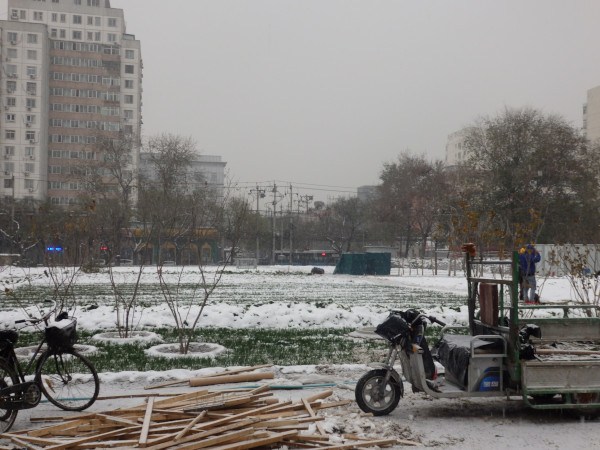
Hi Farmers!We continue with our adventure in China to search for urban gardens. As I told you a few days ago, finding urban gardens here in Beijing is not being easy, but well… we have achieved something!
The other day I was in the Sanyuanlin community garden, and you can see all the other visits we have made in Beijing and in other cities in China in the category “Orchards around the world”.
 Today I will present you a new urban garden in Beijing. According to what they told me, it doesn’t have a name… hahaha, although the place where it is located has been known as «the north grass factory» since the 1960s. It is northeast of the city, in the so-called Beicaochang Hutong.
Today I will present you a new urban garden in Beijing. According to what they told me, it doesn’t have a name… hahaha, although the place where it is located has been known as «the north grass factory» since the 1960s. It is northeast of the city, in the so-called Beicaochang Hutong.
Another time, like when I visited the Sanyuanlin garden, everything was covered in snow, so you can hardly see anything in the photos… The other time it was a community garden and the volunteers who had set it up had photos from last season that They could pass me to show you… In this case it is a garden that is maintained by the Government, and the people who showed it to us did not speak English (luckily we went with a translator…), nor did they have photos, so I will do what I can with what I have: I will tell you what is grown, what it is grown for and I will show you some interesting methods they use to grow in winter.
What is it grown for and what is in this urban garden in Beijing?
This urban garden is on public land and is owned by the government. 5 to 10 people work on it (depending on the season and how much work there is). They are public workers, only a few of the millions of people employed by the Chinese government.
We were told that the purpose of the garden is to grow fresh vegetables for the canteens of some schools in Beijing. I suppose they will do it because, in this way, they will save some expenses, since instead of buying these products outside, they grow them themselves. Anyway… with how cheap the food is here and considering that they have to pay those people who garden… I don’t know how profitable it will be.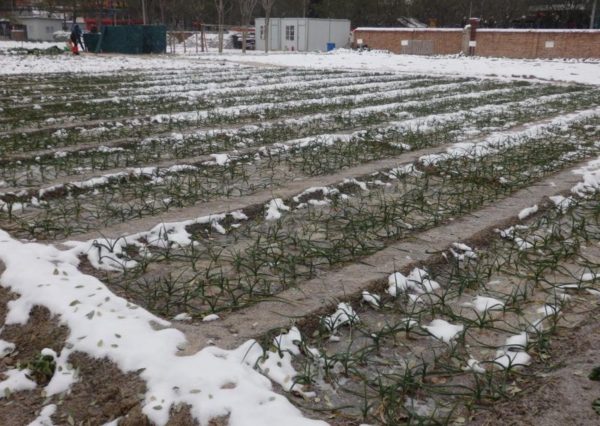
Anyway… continuing with the description, in this garden they grow a lot of things!! To begin with, you can see, on the totally frozen ground, the garlic. I already told you about growing garlic a few weeks ago, and yes, it can be grown at low temperatures, although… I think this may be too much! (I don’t think they will survive the -19ºC minimum it did here in Beijing a few days ago).
We got to see the cucumber plants, and these cabbages (photo below left) which were obviously spoiled by the big snow …
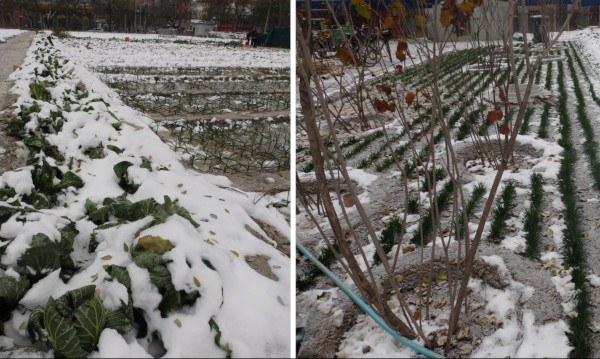
They also have some fruit trees, and winter wheat that, interspersed between the little trees, you can see in the photo above. I’m not sure if they’re growing it for green manure (and they didn’t understand me when I asked), but I guess they are.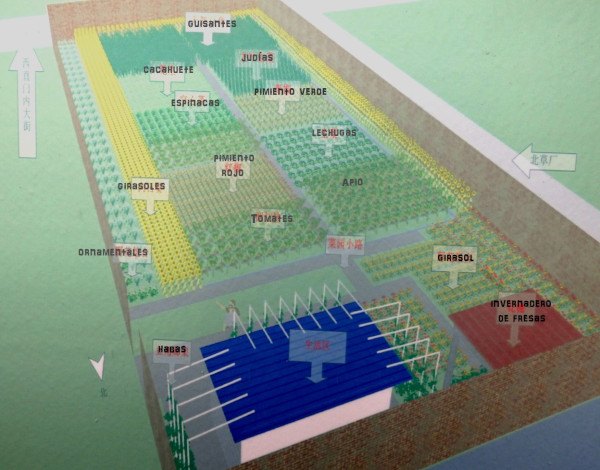
The image above is a map of the place, where you can see everything that is grown in the spring-summer season. As you can see, in addition to the crops that I have already told you about, they usually grow peppers, tomatoes, peas, peanuts, spinach, sunflowers, green beans and broad beans. To cultivate the latter, they have taken advantage of the shed to place some metal bars that serve as a guide for these legumes that, as you know, are climbers. They also have ornamental flowers, a greenhouse with strawberries, and a shed, where they keep the garden tools, seedbeds, etc.
Some tricks to grow in winter
Basically we saw two tricks to cultivate in winter that I had never seen like this live.
In the first place, these mini-greenhouses made with metal rods (the straight longitudinal ones, and the curved transversal ones forming arches) that are covered with plastic.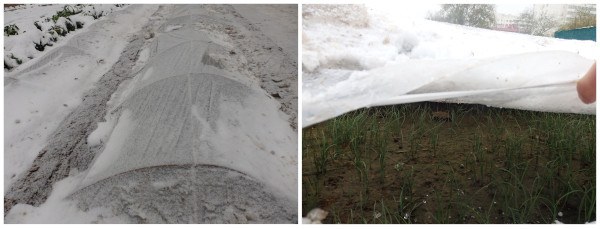
It is a good idea to protect the crops from snow and ice during the winter and to soften the temperature inside a little. It is obvious that this is not valid for any crop to succeed in winter… it has to be one that can withstand low temperatures well. In this case it was leek what they had in there.
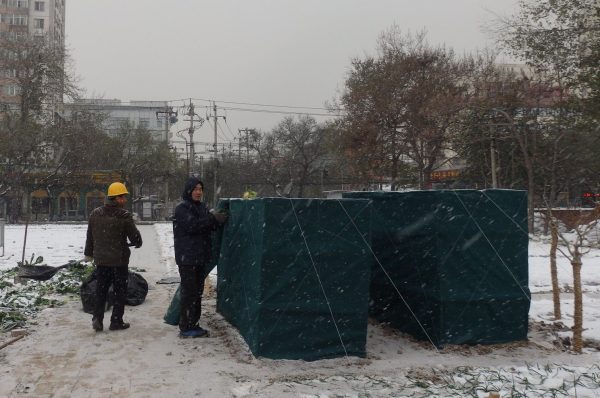 Finally, this green thing that you see that could look like a “cloakroom” is actually a tree guard. According to what they told us, the apple trees were still young and, to prevent them from freezing and dying during the cold winter, they have put them in this kind of nylon covers so that they are more protected from the wind and snow.
Finally, this green thing that you see that could look like a “cloakroom” is actually a tree guard. According to what they told us, the apple trees were still young and, to prevent them from freezing and dying during the cold winter, they have put them in this kind of nylon covers so that they are more protected from the wind and snow.
Well, that’s all I can tell you about this urban garden in Beijing. I would have liked to know more things… but the language is a big barrier. Stay tuned to «Orchards around the world» that we already have very little left for China. All the best!

![Photo of The Dieffenbachia: [Characteristics, Planting, Care, Irrigation and Substrate]](https://www.complete-gardening.com/wp-content/uploads/2022/08/the-dieffenbachia-characteristics-planting-care-irrigation-and-substrate-390x220.png)

